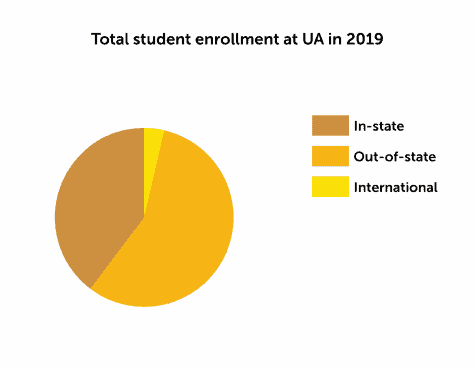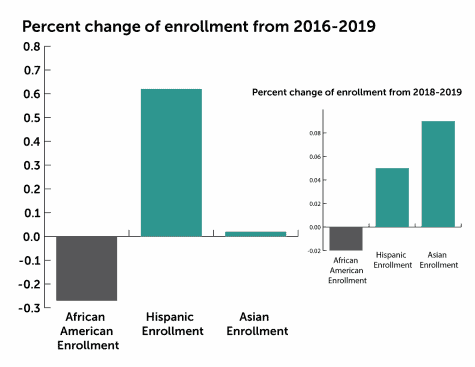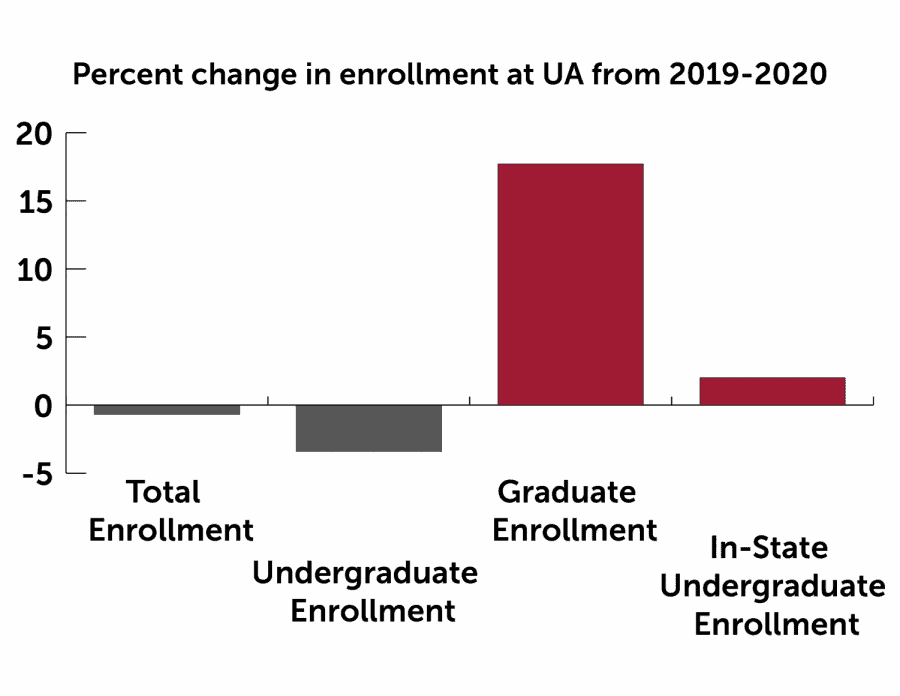UA boasts in-state spike despite decrease in fall enrollment
September 16, 2020
The University of Alabama’s enrollment has decreased 0.68% over the past year. This comes in the wake of the COVID-19 pandemic that has forced the University to adopt a hybrid model of learning and institute several safety protocols in an effort to keep students and faculty safe.
Last fall, 38,103 students attended the University. Enrollment this semester dipped by 261 students, and about 32,000 students completed entry testing to resume in-person instruction.
According to data obtained by al.com, undergraduate enrollment is down 3.4%, but there have been increases in certain demographics of the student body, including graduate students and minority students.

Graduate enrollment has increased 17.7% over the past year bringing the total graduate student population to 5,730. This comes after many graduate programs at the University eliminated requirements for standardized tests such as the GRE, MCAT, MAT and GMAT for Summer and Fall 2020, as well as Spring 2021. This is the highest number of graduate students in the University’s history, and the highest proportion of graduate students since 2013.
In-state undergraduate student enrollment increased 2% marking a second year of this enrollment trend. The University was unable to comment on how many total undergraduate students or graduate students enrolled for Fall 2020 classes. Last year 39.7% of the students were in-state students, 56.5% were out-of-state students and 3.8% were international students from 76 countries.

The number of students who identify as African American, Hispanic or Asian American increased 3.6% this past year. Exact demographic breakdowns for student enrollment are not yet available. Over the past two years, the enrollment of these demographic groups remained relatively static.
There was a 0.37% increase in overall diversity in these three groups from 2016 to 2019. However, during this same period, Hipanic and Asian American student enrollment increased, while African American student enrollment dropped by 0.27%.
Overall, there has been a 3.97% increase in diversity among these three racial and ethnic groups at the University between Fall 2016 and Fall 2020. Representation of other racial and ethnic groups has not yet been released.











